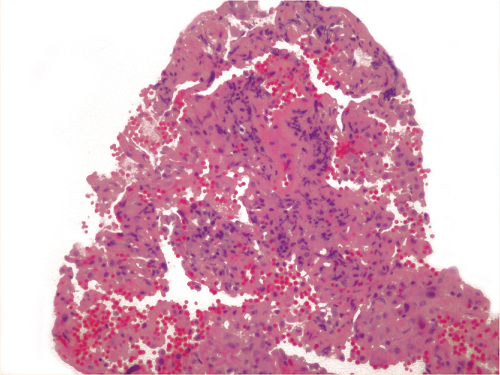Mycoplasma Pneumonia
Armando E. Fraire MD
Pneumonia due to Mycoplasma pneumoniae ranks among the most common variants of community-acquired pneumonia, affecting primarily children, adolescents, and young adults, notably more frequently in the fall and early winter. The lung damage seen in lung infections due to Mycoplasma is believed to be secondary to a direct cytotoxic effect, a host immune reaction, or a combination of the two. The disease is rarely fatal, and bronchoscopic biopsies are seldom performed for diagnosis. Therefore, knowledge of the disease remains limited to that derived from cases in which a biopsy is performed with subsequent diagnostic serologic or enzyme immunoassay testing revealing Mycoplasma infection. A major histopathologic manifestation of the disease is an acute bronchiolitis with permeation of the bronchiolar walls by mixed inflammatory infiltrates consisting of lymphocytes, neutrophils, and histiocytes. From the bronchioles, a lymphoplasmacytic infiltrate extends into the surrounding interstitium, with a resultant widening of the interalveolar walls. In contrast to bacterial pneumonias, a neutrophilic exudate does not occur.
 Figure 11.1: Low power of transbronchial biopsy from patient with proven mycoplasma pneumonia shows lymphoplasmacytic and macrophage infiltrates.
Stay updated, free articles. Join our Telegram channel
Full access? Get Clinical Tree
 Get Clinical Tree app for offline access
Get Clinical Tree app for offline access

|